A Litre at a Time
The Liter of Light project brings affordable, sustainable solar light to areas beyond the reach of the power grid. More than that, however, it brings hope to economically disadvantaged communities using a scalable social enterprise model with effects that reach far beyond the glow of a tiny LED.
The residents of the remote fishing village in Dampalit received an unexpected gift last Christmas. Situated on the outskirts of Malabon City on the northwestern border of Metro Manila, the informal settlement had always been smothered in darkness come nightfall. Now, strung along the winding dirt road that connects the community to the rest of civilisation are rows of solar-powered streetlights encased in one-litre plastic bottles. Suspended from tall, whitewashed PVC pipes like shining drops of water from gangling faucets, they illuminate the surrounding night with a soft, white glow.
Plastic soda bottles also dot the roofs of the village’s ramshackle houses, set into the corrugated metal. Ordinarily, they are filled with a solution of purified water and bleach, refracting sunlight into the house during the day. In the case of Dampalit they also sport one-watt LEDs powered by small, rectangular solar panels that jut out of the bottles’ spouts. Like the street lamps, these units light up at dusk, providing solar-powered light to the poorest of the poor.
‘Before, it was very, very dark,’ says Edna Nava, a long-standing village resident. Like so many people in the developing world, she and her family live in an area far removed from public lighting. Armed with rudimentary headlamps or torches, they would carefully traverse the extended stretch of earth leading to and from the main road. ‘We were really scared,’ she admits. ‘Back in the day, we did not have electricity, only kerosene lamps. After we finished our supper, we would put them out and go to bed. Now, when it gets dark, you can see the lights turn on one by one. It’s actually quite amusing to watch.’
Thanks in part to the Philippines’ My Shelter Foundation and the City of Malabon, Nava’s village was one of the first communities in Metro Manila to receive this unique form of solar-powered light. What began as a plastic bottle on the roof has evolved into a sustainable lighting project geared towards helping underprivileged neighbourhoods in countries where climate change is having a destructive impact. The programme is known as ‘A Liter of Light’ (Isang Litrong Liwanag).
The Liter of Light solar bulb is made of a plastic bottle, water, a tablespoon of bleach (to prevent mould) and a drop of glue. It provides light to 28,000 homes in Metro Manila alone and can be found in countries from Argentina to Zambia.
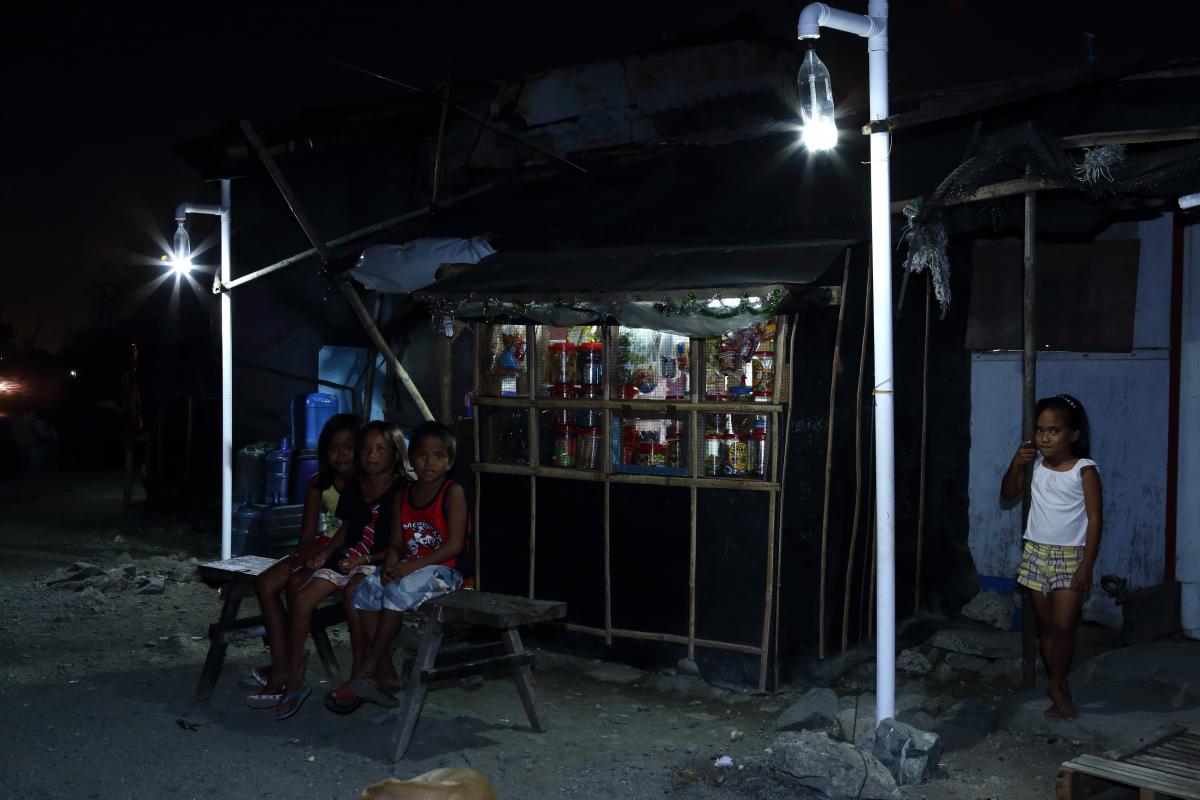
Inspired by green innovations from across the globe, the My Shelter Foundation launched A Liter of Light in April 2011, bringing eco-friendly solar bottle bulbs to impoverished communities worldwide. Their goal is to light one million homes by 2015. Pioneered by Brazilian mechanic Alfredo Moser and further developed by students from the Massachusetts Institute of Technology (MIT), the device is based on the principles of Appropriate Technologies, an approach which employs small-scale, easily replicable innovations to meet the basic human needs of developing communities.
You seem to enjoy a good story
Sign up to our infrequent mailing to get more stories directly to your mailbox.‘Even before, we were designing windows made out of plastic bottles,’ says Illac Diaz, founder of the My Shelter Foundation. ‘Only after doing that for a year did we come across Alfredo Moser, who put them on the roof.’ Diaz, then a student at MIT, took up the challenge of building a scalable social enterprise around the solar bottle bulb as part of the foundation’s mission to develop climate-adaptive architecture. Given the Philippines’ susceptibility to severe, weather-related catastrophes, Diaz is convinced that investing in skills-based resiliency is the ideal means to tackle cyclical, climate-related challenges.
‘The Liter of Light is actually a day-and-night solution,’ Diaz says. The solar bottle bulb provides up to 55 watts of light during the day, while the solar power upgrade—comprised of one-watt or three-watt LEDs—operates in the evening. In keeping with the project’s principles, the circuit is easy to assemble. LEDs are wired to miniature solar panels with the use of a copper board. Its rechargeable batteries are a generic component found in nearly all computers. ‘Basically, it’s composed of mostly locally available materials,’ Diaz claims. ‘We just import the solar panels from China. Even leftover parts from electronic waste can be harvested to build solar lights.’
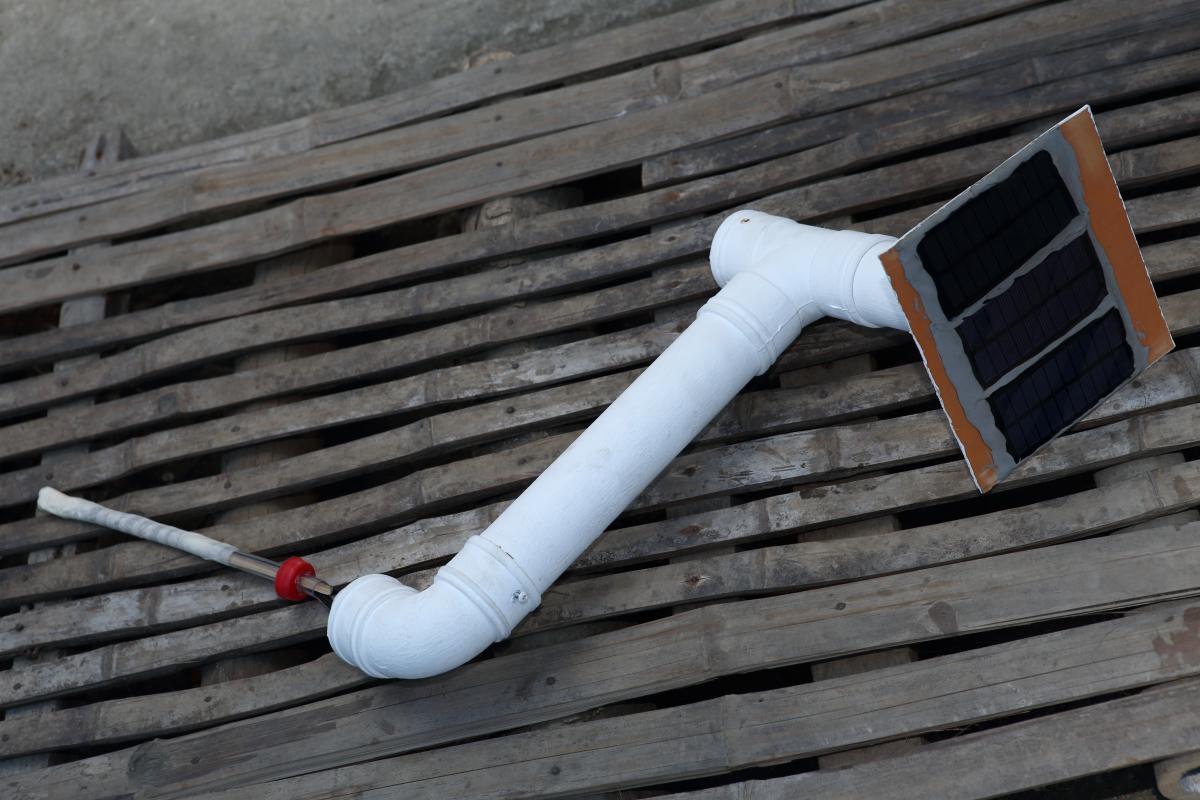
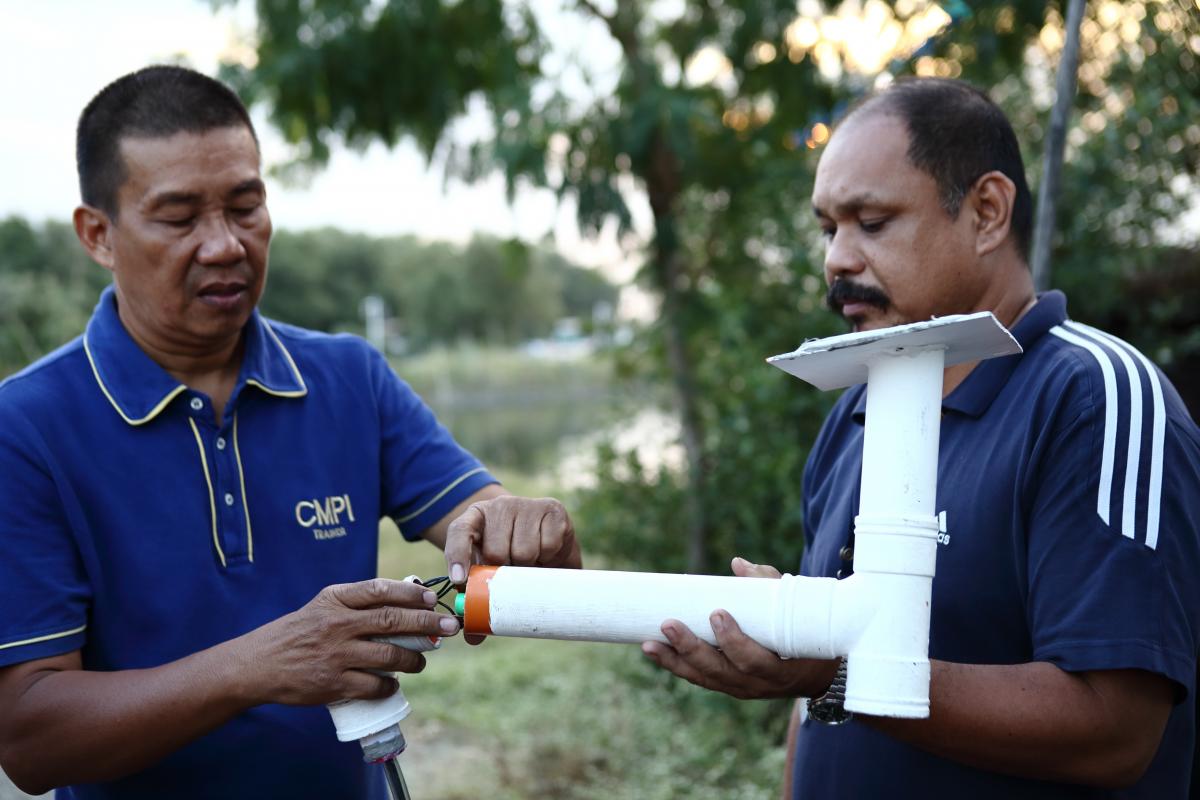
Trainers Angelito Santos and Joselito Olaivar display the inner workings of the solar bottle bulb. Liter of Light volunteers regularly visit impoverished communities such as Dampalit to train residents to assemble, install and repair the plastic bulbs and solarpowered units. The project provides a much-needed source of livelihood for the less fortunate.
On average, the solar bottle bulb generates energy savings of up to €7 (US$9) a month–a hefty sum considering that one in four Filipinos lives on less than €1 (US$1.30) a day. ‘It’s such a great burden,’ Nava says. ‘Especially now, electricity is very expensive. Before, we used to pay 1,200 Philippine Pesos (€21 or US$26.70) [every month]. Now it has risen to 1,500 pesos (€26.20 or US$33.40). That’s only for electricity. We still have to pay for food.’ With the solar power upgrade, Nava not only gets to save on her energy bills, but she also receives round-the-clock solar-powered light.
Together with the installation, the My Shelter Foundation offers technical training to the recipients of the solar bottle bulbs in cooperation with the Philippines’ national training centre (TESDA), local government units, NGOs and a growing network of volunteers. Residents of economically disadvantaged communities are taught how to assemble, install and repair the plastic bulbs and solar-powered units. In order to build a social enterprise, the foundation supplies wholesale materials almost at cost to grassroots entrepreneurs nationwide, establishing a much-needed source of livelihood for the less fortunate.
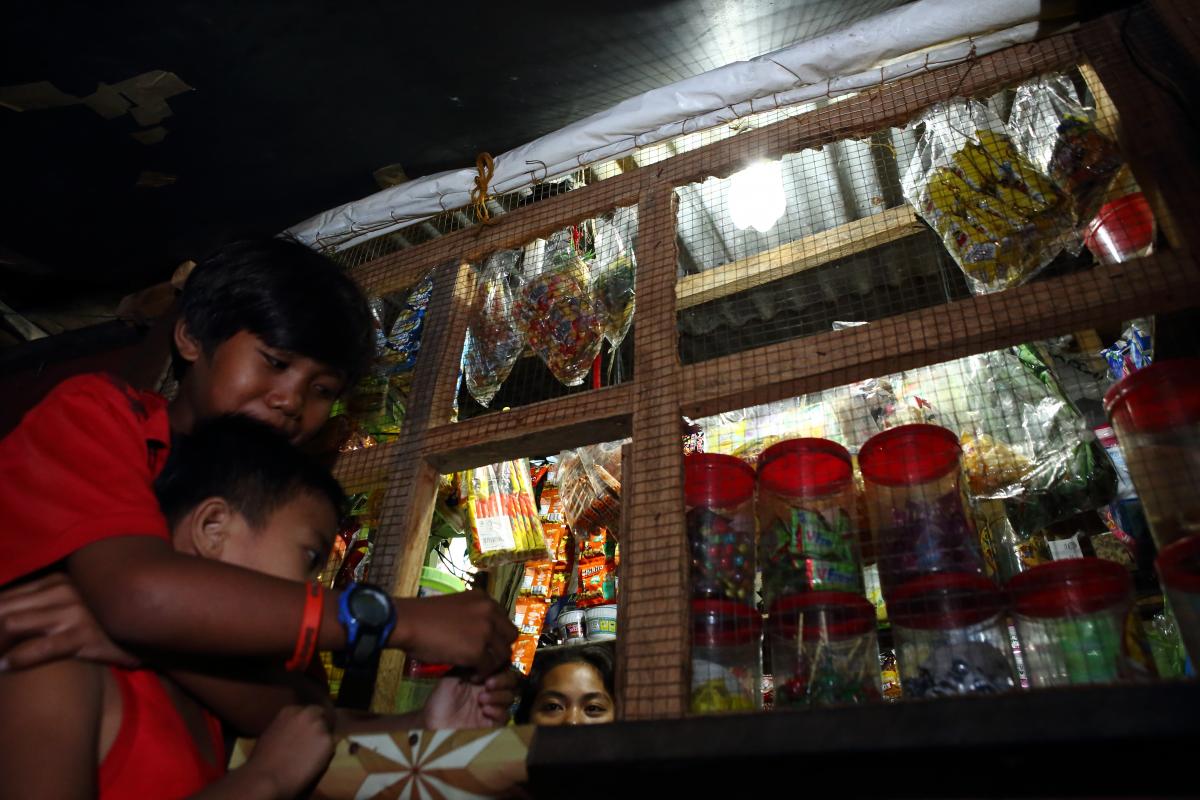
‘The Liter of Light is not and has never been the plastic bottle on the roof,’ Diaz says. ‘It is really a one-bottle, one-watt-per-house social enterprise.’ He hopes that recipients of the solar bottle bulb will use some of their monthly savings to buy the solar power upgrade. ‘Once you have a plastic bottle on the roof, it’s an easy sell for us to get people to spend 700 pesos (€12.20 or US$15.60) for the nightlight. It’s so simple to just twist off the cap and then lock the kit in. It’s our foot in the door or our hole in the roof, so to speak.’ The revenue generated from the sale of solar-powered units is used to offset the costs of the foundation’s regional production centres, which mainly employ women’s cooperatives, inmates from correctional institutions and persons with disabilities.
‘Even with no knowledge of electronics, they can assemble the light after just one hour of training,’ says Angelito Santos, a Liter of Light trainer from the City of Malabon Polytechnic Institute (CMPI). ‘The circuit is very simple. We only need to teach them how to attach the solar panel because they can already see from the pictorial which part goes here and which part goes there. That’s why it’s so easy.’ Assisted by CMPI students, he and co-trainer Joselito Olaivar educate the village residents of Dampalit on how to build and maintain the solar power upgrades.
As a frequent visitor to the fishing community, Santos has witnessed first-hand the massive impact of the Liter of Light. ‘In the past, they really couldn’t see where they were going. Even if you are familiar with the area, it’s still intimidating. Now, even the children get to go out at night. They were very happy when we first arrived because their neighbourhood got brighter.’
Liter of Light is a global open source movement, developed by Alfredo Moser of Brazil in 2002, aiming to provide affordable and sustainable light to places where electricity is not available.
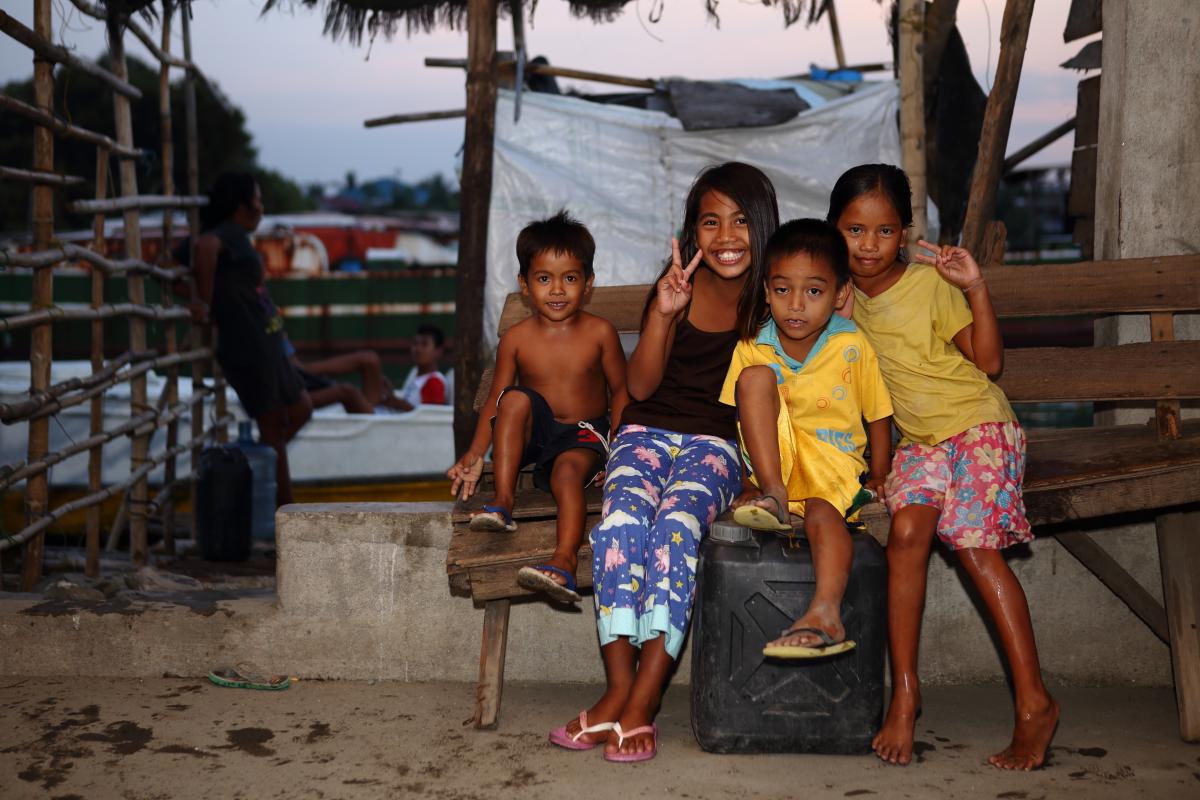
Elsewhere in the Philippines, the Liter of Light illuminates more than 36,000 homes and villages, particularly in remote disaster areas that were completely devastated during Typhoon Haiyan, the deadliest hurricane ever recorded in the country’s history. ‘Our aim for climate-challenged societies is that people would be ready,’ Diaz says. ‘If [a calamity] hit them, somehow the materials would be there. The knowledge would already be in the community and we would just help consolidate it all.’
A Liter of Light creates sustainable solutions ahead of the storm, working to address the damage wrought by natural disasters before it occurs. The project empowers residents of the affected areas with the necessary skills to adapt to dire circumstances, thereby minimising their dependence on humanitarian aid. ‘It’s a bottom-up approach, using parts from electronic junk and building a skills-base of people,’ Diaz explains. ‘Not only does it save power, but in times of emergencies like in Tacloban, when the whole power grid goes down, you can immediately mobilise people to build them. It’s a completely new way of reorienting yourself.’
Active in over 20 countries, A Liter of Light has provided more than 360,000 solar bottle bulbs to families all over the world, enriching their lives with a device as effective as its design is simple. ‘We’re thinking about the smallest watt, but, multiplied in the millions, it might be the most powerful energy source that nobody has thought about,’ Diaz says. ‘It’s cacheing solar energy; that’s what the Liter of Light is. We deal with it a bottle at a time.’ That something as simple as a plastic bottle can bring such benefits to so many people shows that sustainable solutions need not be complex or even expensive to help those in need.

